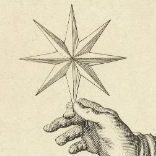-
Popular Topics
-
Topics
-
Recent Status Updates
-
Options
Options
-
And you may find yourself in a shot-gun shack. And you may find yourself in another part of the world. And you may find yourself behind the wheel of a large automobile. And you may find yourself in a beautiful house, with a beautiful wife. And you may ask yourself, "Well, how did I get here?"
-
Is there room for 11* fully autonomous human nations/ settlements? This is the most egregious example but similar anecdotes can be found relating to other racial/ multiracial hubs; do we have too many spaces relative to our player base now, which has remained effectively the same size since the Pandemic?
(This is a question. I don't claim to have the answer. I'd like to see yours, though!)
-
How do we get there? How did you get here, by the way?' [Will asked].
He heard Halt's deep sigh and knew he'd done it again.
'Do you ever,' the older Ranger said with great deliberation, 'manage to ask just one question at a time? Or does it always have to be multiple choice with you?'
Will looked at him in surprise. 'Do I do that?' he asked. 'Are you sure?'
Halt said nothing. He raised his hands in a 'See what I mean?' gesture...
'Halt,' [Selethen said], 'I could be wrong, but I think you were just guilty of the same fault. I'm sure I heard you ask two questions just then.'
'Thank you for pointing that out, Lord Selethen,' Halt said with icy formality.
No Recent Status Updates -
Options














Recommended Posts